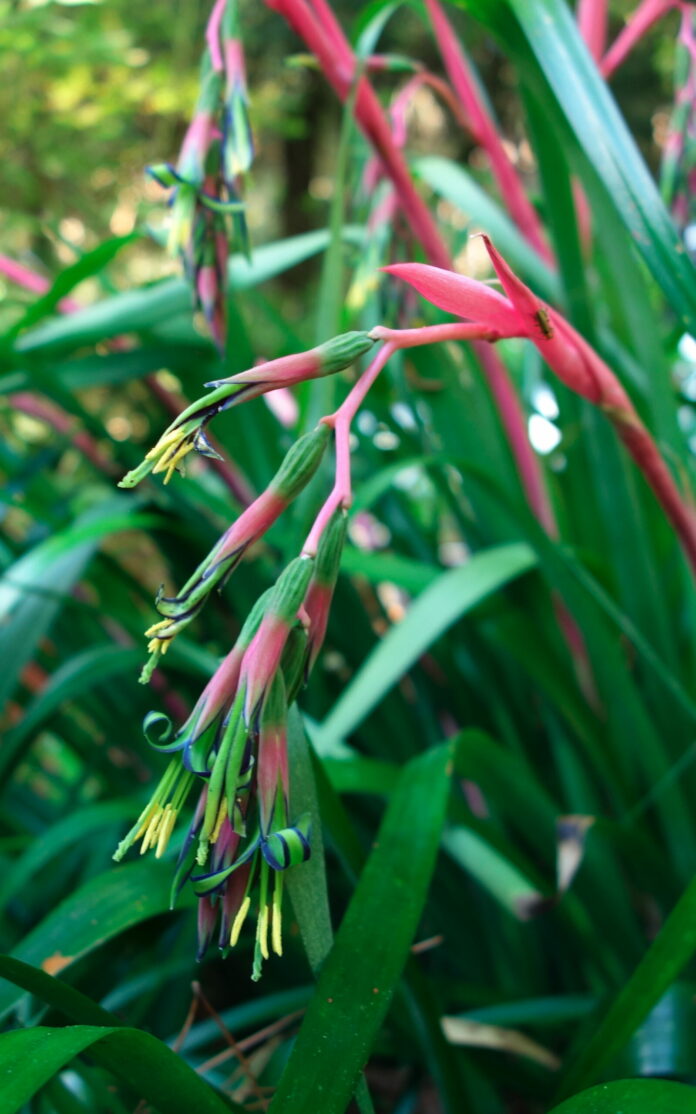You Asked For It: Shade Gardening Ideas
Some of us garden in shade. We may live under the trees so that shade is year-round. Maybe most of your shade happens in the winter. Maybe your garden is morning shade but in the afternoon it gets a blast of hot summer sun. What’s a gardener to do? The choices for sunny locations are many but for those of us who garden in shady or partially shady places we have a tough time finding good, reliable plants.
Looking for shade tolerant flowering shrubs to cut for bouquets? Fragrant daphne odora is a wonderful small shrub. Sweet olive or osmanthus fragrans is a large evergreen shrub or small tree with blooms that smell like apricots in winter. For summer fragrance grow Carol Mackie or Summer Ice daphne.
Plants to grow in dry shade areas include bergenia, mahonia, nandina filamentosa and fragrant sarcococca. Clivia, Viburnum ‘Mariesii’. Oakleaf hydrangea foliage and flowers look great in bouquets and the leaves turn red in fall which is an added bonus.
Chinese Ground Orchid (Bletilla striata) is another of my favorite plants for shade. A natural companion for ferns and wildflowers, this plant is tougher than it looks. Vivid, magenta blooms resembling small cattleya orchids emerge on long stalks for about 6 weeks in the spring.
Every spring I look forward to the unique flowers of my Queen’s Tears billbergia. This pineapple relative makes a vigorous, deer resistant groundcover under trees without becoming invasive. Exotic looking rosy-red spikes are topped with drooping pink, blue and green flowers that look like dangling earrings. Insects never bother them. Give them a little water now and then and forget them. They’re that easy to grow.
California native Western Wild Ginger and Pacific Coast Iris grow well in shade also as do Western Sword fern and Woodwardia ferns. Coral Bells, columbine, lewisia, lobelia cardinals, ribes, salvia spathacea, fragraria, dicentra, calycanthus, philadelphus or Mock Orange and carpenteria to name just a few.
What veggies can you grow in shade? Without much sun, plants photosynthesize less and produce less sugar. On the bright side – no pun intended – shade does offer some benefits. Gardens in the shade don’t have to be watered as often and weeds don’t grow as quickly.
Root crops and leafy plants can tolerate more shade than fruiting crops. Beets, carrots, celery and turnip will grow quite happily in partial shade. So will shallots and bunching onions, cilantro, garlic, chives, kale, leeks, parsley and thyme. Leafy plants can tolerate partial to light shade because their leaves grow larger to absorb the sunlight the plants need. In very light shade areas concentrate on leafy green like Swiss chard, lettuce, spinach, radishes and tarragon.
Shade tolerant vegetables for your brightest spots – the partial shade areas – include beans, peas, potatoes, pumpkin, summer squash and early maturing tomatoes like Early Girl, Stupice, San Francisco Fog, Isis Candy as well as other cherry tomatoes. Corn and peppers will be lankier and bear later and only modesty in partial shade.
Shade can be decidedly helpful to some crops. Leafy greens will be more tender and succulent, without the bitterness they tend to acquire when conditions are too hot. A combination of a bit of afternoon shade and an abundance of moisture will help cut-and-come-again crops like broccoli, lettuce, cabbage and celery stay in good condition longer in hot weather.
Whatever plants you grow in your shady garden, be sure not to crowd them. Plants tend to sprawl there and if placed too close together they will compete for available light. Place your vegetables plants wherever they will get the most light even if it means putting different crops in separate places. A small harvest is still better than no harvest at all.
Sure, every garden is different – different look, different soil, different degree of shade, but it’s surprising how often one of these plants plays a starring or supporting role in a vignette or border
Those of us who live under the trees know a shady garden is a pleasant place to spend time on a hot summer day. Be thankful for what you do have.
Jan Nelson, a landscape designer and California certified nursery professional, will answer questions about gardening in the Santa Cruz Mountains. E-mail her at ja******@*ol.com or visit www.jannelsonlandscapedesign.com.













